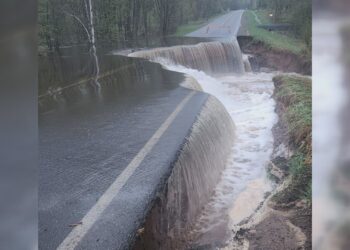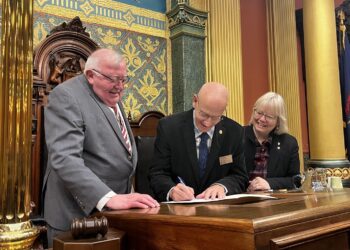Thunderstorms most often occur during the summer months in the Upper Peninsula. During the early spring, the greatest probability of severe weather is confined to the southern U.S. By May into June, the probability of severe thunderstorms and tornadoes shifts northward and increases. By August, the probability wanes, but remains over middle America with the U.P. right on the northern border of the best chances of severe weather.
One of the deadliest severe weather disasters during August occurred on the Ontonagon River system just past mid-month in 1942. Violent thunderstorms developed over the western U.P. the evening of August 21, 1942.
Three men– George Dent, 79; Tommy Mason, 31; and Joseph Paul Garsanki, 53– were swept to their deaths when a flash flood estimated at 10 to 12 feet deep tore down a valley occupied by a branch of the Ontonagon River and swept their cabin off its foundation. Heavy rain was widespread, with Ironwood (2.38″) and Munising (1.92″) both receiving daily record rainfall out of this system.
Forty-six years later on August 16, 1988, a line of thunderstorms tore through the Marquette area with winds estimated at up to 90 miles per hour. Hundreds of trees were blown down, and a steeple on one of the churches in town was blown off its pedestal by the violent gusts.
The National Weather Service (1.59″), Houghton (1.35″), and the City of Marquette (2.06″) all had daily rainfall records set on August 16, 1988. The City of Marquette had four daily rainfall records set during that month: 2.76″ on August 2, 1.42″ on August 13, 2.06″ on August 16, and 1.28″ on August 17.
The 8.59″ of rain received at the NWS during August 1988 is second only to June 1968, when the station received 12.26″, for the wettest month on record.


















